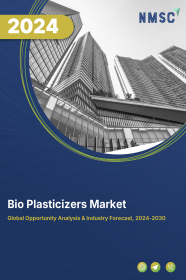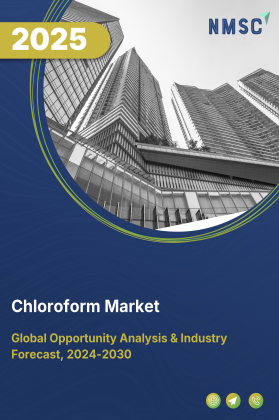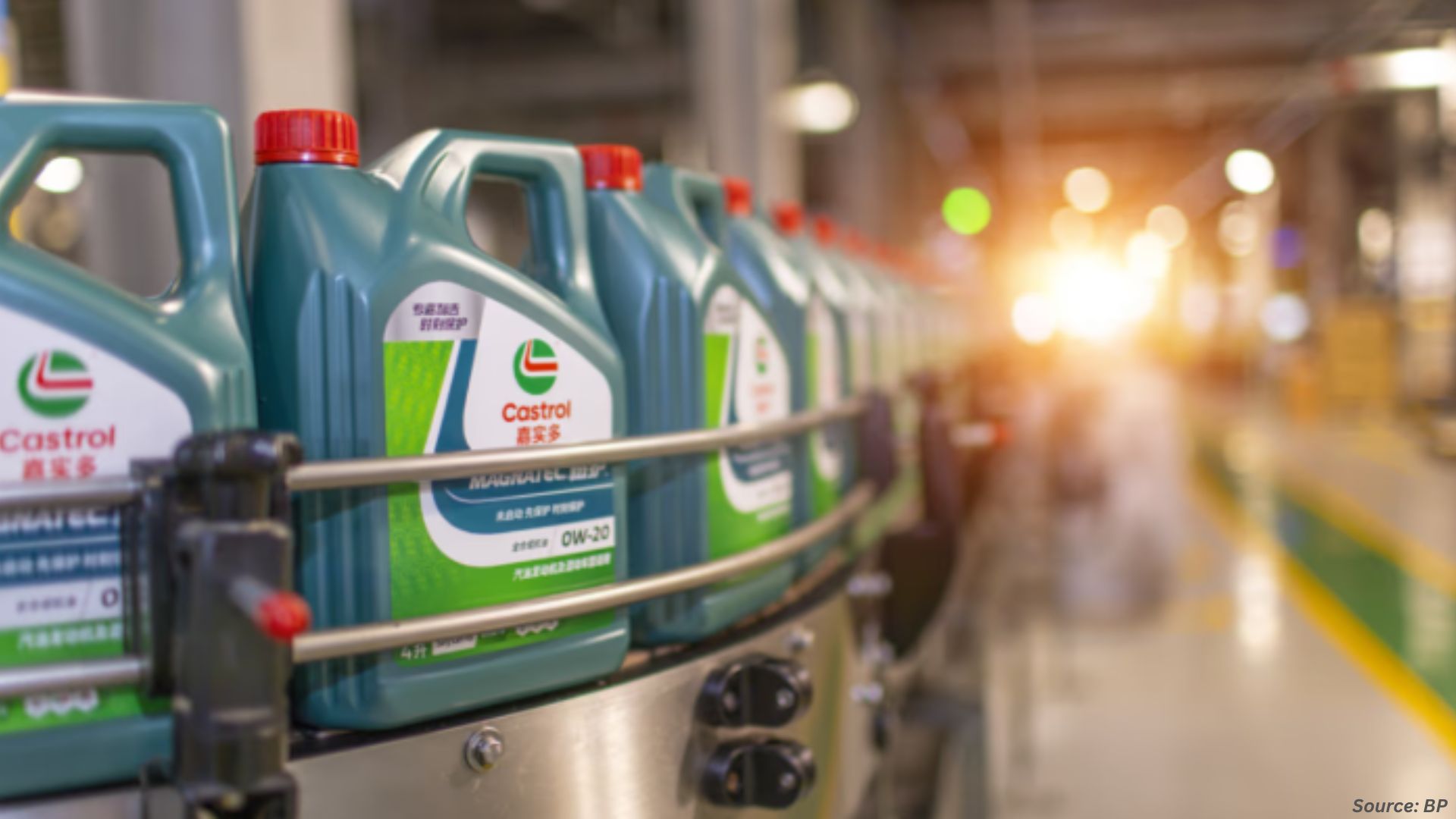
Bio Plasticizers Market by Type (Epoxides, Sebacates, Succinic Acid, Citrates, Glycerol Esters, and Others), by Application (Flooring & Wall, Film & Sheet Coverings, Wires & Cables, Coated Fabrics, Consumer Goods, and Others)- Global Opportunity Analysis and Industry Forecast, 2020 – 2030
Industry: Materials and Chemical | Publish Date: 31-Dec-2024 | No of Pages: 488 | No. of Tables: 277 | No. of Figures: 248 | Format: PDF | Report Code : MC305
Market Defination:
The global Bio Plasticizers Market size valued to USD 1.55 billion, pegged a volumetric sale of 2,148.7 kilotons in 2019, and is predicted an elevation of USD 2.11 billion, with an increase in volumetric sale up to 3,089.6 Kilotons by 2030, growing with a respective CAGR of 2.7% and 3.3% from 2020-2030.
Bio Plasticizers are bio-based polymer additives obtained from castor oil, soybean, starch, palm oil, and other such vegetable raw materials. These are renewable in nature and tend towards sustainable development of the ecosystem, reducing the carbon footprints. Bio plasticizers functions towards the improvement of flexibility, softness, workability, and volatility of the plasticized materials. Based on modifications of the base-materials, the bio plasticizers can be internal or external. Bio plasticizers can easily replace phthalate from packaging, medical devices, toys, personal care products and many such products.
Market Dynamics and Trends:
The global bio-based plasticizers market is observing a lucrative growth due to stringent regulations regarding ban on phthalate-based plasticizers, increasing demand for polyvinyl chloride (PVC) in a wide range of applications at different industrial verticals, growing demand for bio-based plastic films in the food & packaging industries, as well as inclination of key players towards sustainable manufacturing processes, using eco-friendly raw-materials.
Besides, bio plasticizers hold wide application in the building & construction industry, majorly in architectural molds, thermal insulation panels, sculptures, and other construction materials like adhesives, bonding agents, flooring, sealants, and roofing supplies. Hence, the building & construction segment is expected to supplement the bio plasticizers market growth in future.
However, the relatively expensive cost of raw materials used to produce bio plasticizers, are responsible to impede the growth of global market during the forecast period.
Moreover, factors such as increase in research & development activities, growing application of bio plasticizers in the emerging economies, as well as increasing market trend towards sustainable development, are to provide avenues for growth of the global bio plasticizers market in the coming future.
Market Segmentations and Scope of the Study:
The global bio plasticizers market share analysis is based on type, application, and geography. Based on type, the market is segmented into Epoxides, Sebacates, Succinic Acid, Citrates, Glycerol Esters, and Others. Based on application, the market is divided into Flooring & Wall, Film & Sheet Coverings, Wires & Cables, Coated Fabrics, Consumer Goods, and Others. Geographic breakdown and analysis of each of the previously mentioned segments include regions comprising North America, Europe, Asia-Pacific, and RoW.
Geographical Analysis:
North America is expected to dominate the global bio plasticizers market, accounting for the highest market shares. This is attributed to stringent regulations regarding ban of phthalates, leading to higher adoption of bio plasticizers. Besides, higher demand for eco-friendly bio-films from the food & packaging industry is expected to propel the bio plasticizers market growth in this region.
The Europe region is expected to hold the second-highest market shares, representing a substantial growth of the bio plasticizers market over the forecast period. This is attributed to increasing government investments on environmentally-friendly initiatives and growing demand for bio-plasticizers in personal care products and consumer goods.
Asia Pacific region is expected to account for considerable market shares in the global bio plasticizers market, growing with the highest CAGR throughout the forecast period. Factors such as growing awareness among consumers regarding bio-degradable as well as eco-friendly plasticizers, higher investments in R&D activities, increasing government initiatives to produce effective and low-cost bio-plasticizers.
Competitive Landscape:
The bio plasticizers industry, which is highly competitive, consists of various market players. Some of the major market players include DuPont, Bioamber Inc., DOW Chemical Company, Evonik Industries, Emery Oleochemicals, Lanxess AG, Myriant Corporation, Matrìca S.p.A., PolyOne Corporation, Galata Chemicals, Vertellus Holdings LLC., ROQUETTE, OXEA GmbH, Jungbunzlauer Suisse AG, Proviron, Hebei Jingu Plasticizer Co., Ltd. and Jiangxi East Huge Dragon Chemical Co., Ltd. among others. The past endeavors, present developments and futuristic advancements, sum-up to comprehend the overall growth of the global market.
For instance, in November 2019, Emery Oleo chemicals, announced the expansion of its partnership with Omya Specialty Materials, a leading distributor of specialty chemicals in the United States. In this expanded partnership Omya opts to distribute Emery’s Green specialty chemicals majorly, a comprehensive portfolio of Polymer Additives (GPA) antifogging agents, antistatic agents, process additives for non-vinyl thermoplastics as well as additives for bioplastics. These products, sold under Emery’s well-known LOXIOL and EDENOL brands, are backed by Emery’s 60+ years of technical expertise in the plastics industry.
Furthermore, in February 2020, the very well-known Lanxess AG, introduced its ‘Vegan LANXESS processing promoter’ to ensure reduction of Carbon-footprints in production process of tiers. Aktiplast PP-veg, a vegetable raw material-based processing promoter for polymer blends, can be used in the manufacturing of tires and all kinds of technical rubber articles. The Aktiplast PP-veg bio plasticizer based on renewable raw materials, helps in significant reduction of carbon emissions, hence contributing in the conservation of ecosystem.
Key Benefits:
-
The bio plasticizers market report provides a quantitative analysis of the current market and estimations through 2020-2030 that assists in identifying the prevailing market opportunities to capitalize on.
-
The study comprises a deep dive analysis of the market trend including current and future trends for depicting the prevalent investment pockets in the market.
-
The report provides detailed information related to key drivers, restraints and opportunities and their impact on the market.
-
The report incorporates competitive analysis of the market players along with their market share in the global market.
-
The study elaborates SWOT analysis and Porters Five Forces model for the market.
-
Value chain analysis in the bio plasticizers market study provides a clear picture of the stakeholders’ roles.
Bio Plasticizers Market Key Segments:
By Type
-
Epoxides
-
Sebacates
-
Succinic Acid
-
Citrates
-
Glycerol Esters
-
Others
By Application
-
Flooring & Wall
-
Film & Sheet Coverings
-
Wires & Cables
-
Coated Fabrics
-
Consumer Goods
-
Others
By Geography
-
North America
-
U.S.
-
Canada
-
Mexico
-
-
Europe
-
UK
-
Germany
-
France
-
Spain
-
Poland
-
Russia
-
Italy
-
Rest of Europe
-
-
Asia-Pacific
-
China
-
India
-
Japan
-
Australia
-
Korea
-
Taiwan
-
Thailand
-
Indonesia
-
Rest of Asia-Pacific
-
-
RoW
-
UAE
-
Brazil
-
South Africa
-
KSA
-
Report Scope and Segmentation:
|
Parameters |
Details |
|
Analysis Period |
2019–2030 |
|
Base Year Considered |
2019 |
|
Forecast Period |
2020–2030 |
|
Market Size Estimation |
Billion (USD) |
|
Market Segmentation |
By Type (Epoxides, Sebacates, Succinic Acid, Citrates, Glycerol Esters, Other Types) By Application (Flooring & Wall, Film & Sheet Coverings, Wires & Cables, Coated Fabrics, Consumer Goods, Other Applications) |
|
Geographical Segmentation |
North America (U.S., Canada, Mexico) Europe (UK, Germany, France, Italy, Spain, Poland, Russia, Rest of Europe), Asia-Pacific (China, Japan, Australia, India, Korea, Taiwan, Thailand, Indonesia, Rest of APAC), Rest of the World (UAE, Brazil, South Africa, KSA) |
|
Companies Profiled |
DuPont, Bioamber Inc., DOW Chemical Company, Evonik Industries, Emery Oleochemicals, Lanxess AG, Myriant Corporation, Matrìca S.p.A., PolyOne Corporation, Galata Chemicals, Vertellus Holdings LLC., Roquette, Oxea GmbH, Jungbunzlauer Suisse AG, Proviron, Hebei Jingu Plasticizer Co., Ltd. and Jiangxi East Huge Dragon Chemical Co., Ltd. |
KEY PLAYERS
-
DuPont
-
Bioamber Inc.
-
DOW Chemical Company
-
Evonik Industries
-
Emery Oleochemicals
-
Lanxess AG
-
Myriant Corporation
-
Matrìca S.p.A.
-
PolyOne Corporation
-
Galata Chemicals
-
Vertellus Holdings LLC.
-
ROQUETTE
-
OXEA GmbH
-
Jungbunzlauer Suisse AG
-
Proviron
-
Hebei Jingu Plasticizer Co., Ltd
-
Jiangxi East Huge Dragon Chemical Co., Ltd.




















 Speak to Our Analyst
Speak to Our Analyst

























